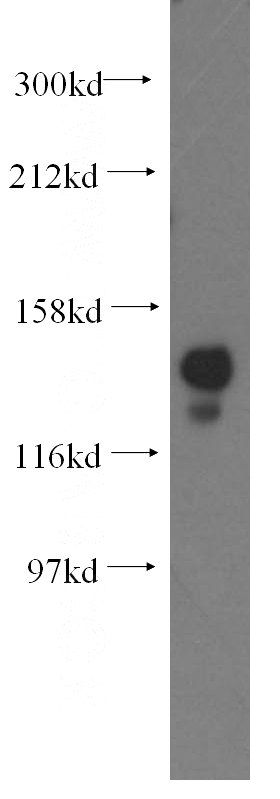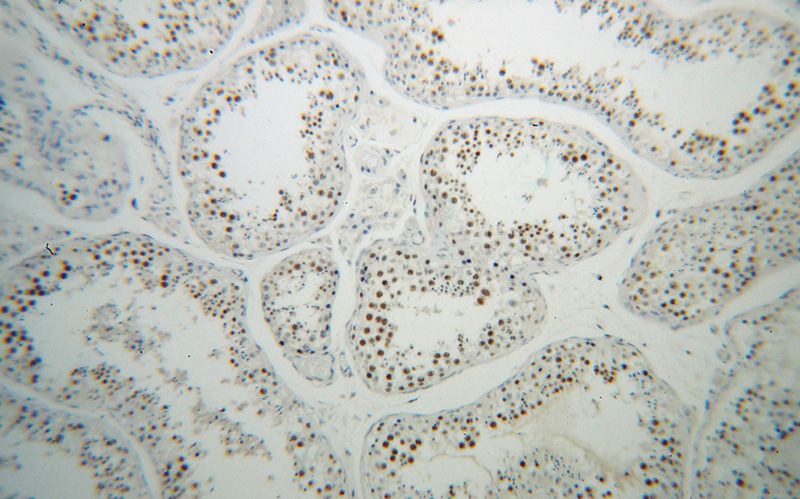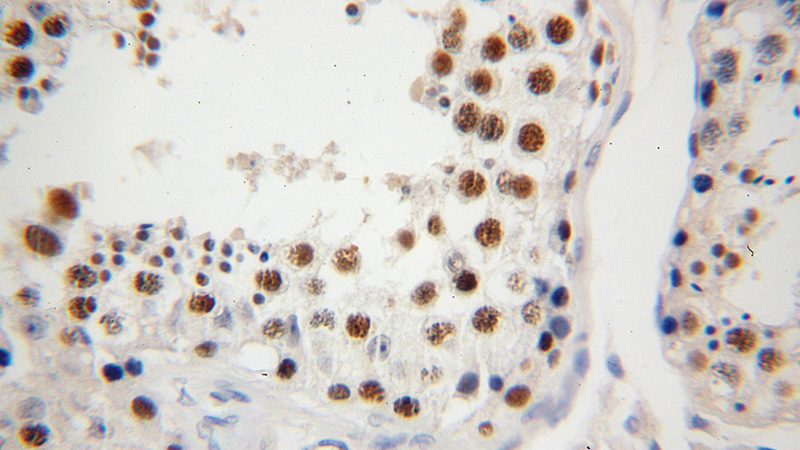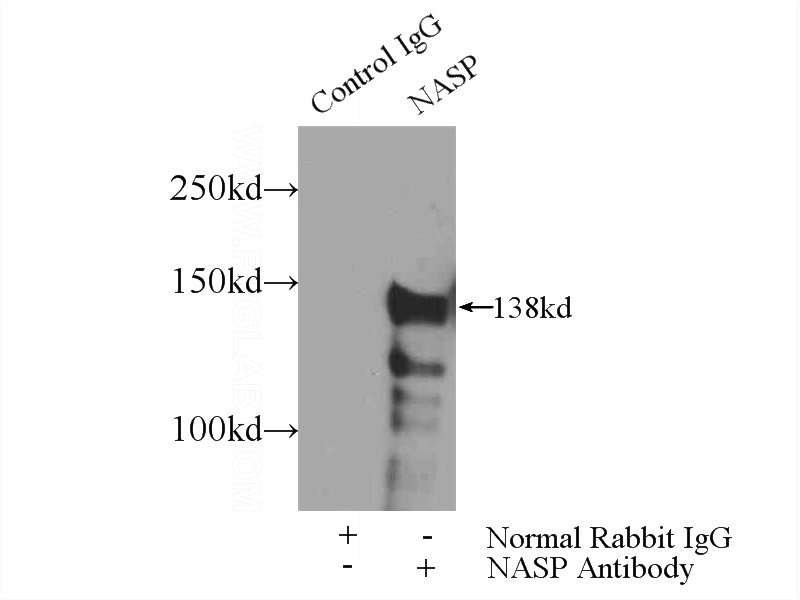-
Product Name
NASP antibody
- Documents
-
Description
NASP Rabbit Polyclonal antibody. Positive IHC detected in human testis tissue, human lymphoma tissue. Positive IF detected in MCF-7 cells. Positive IP detected in mouse testis tissue. Positive WB detected in mouse testis tissue. Observed molecular weight by Western-blot: 138kd
-
Tested applications
ELISA, WB, IHC, IF, IP
-
Species reactivity
Human,Mouse,Rat; other species not tested.
-
Alternative names
DKFZp547F162 antibody; FLB7527 antibody; FLJ31599 antibody; FLJ35510 antibody; NASP antibody; PRO1999 antibody
-
Isotype
Rabbit IgG
-
Preparation
This antibody was obtained by immunization of NASP recombinant protein (Accession Number: NM_002482). Purification method: Antigen affinity purified.
-
Clonality
Polyclonal
-
Formulation
PBS with 0.1% sodium azide and 50% glycerol pH 7.3.
-
Storage instructions
Store at -20℃. DO NOT ALIQUOT
-
Applications
Recommended Dilution:
WB: 1:500-1:5000
IP: 1:500-1:5000
IHC: 1:20-1:200
IF: 1:10-1:100
-
Validations

mouse testis tissue were subjected to SDS PAGE followed by western blot with Catalog No:112958(NASP antibody) at dilution of 1:1000

Immunohistochemical of paraffin-embedded human testis using Catalog No:112958(NASP antibody) at dilution of 1:100 (under 10x lens)

Immunohistochemical of paraffin-embedded human testis using Catalog No:112958(NASP antibody) at dilution of 1:100 (under 40x lens)

Immunofluorescent analysis of MCF-7 cells, using NASP antibody Catalog No:112958 at 1:25 dilution and Rhodamine-labeled goat anti-rabbit IgG (red).

IP Result of anti-NASP (IP:Catalog No:112958, 5ug; Detection:Catalog No:112958 1:1000) with mouse testis tissue lysate 4000ug.
-
Background
NASP (nuclear autoantigenic sperm protein) is associated with DNA replication, cell proliferation and cell cycle progression through functioning as a Histone H1 binding protein that mediates histone transport to the nucleus. NASP had two isoforms, tNASP (testis type) and sNASP (somatic type). The tNASP was mainly expressed in testis, a variety of malignant tumors, stem cells and embryonic tissues, while sNASP existed in all somatic mitosis cells. This antibody can recognize both isoforms.
-
References
- Campos EI, Fillingham J, Li G. The program for processing newly synthesized histones H3.1 and H4. Nature structural & molecular biology. 17(11):1343-51. 2010.
- Kato K, Okuwaki M, Nagata K. Role of Template Activating Factor-I as a chaperone in linker histone dynamics. Journal of cell science. 124(Pt 19):3254-65. 2011.
- Ma W, Xie S, Ni M. MicroRNA-29a inhibited epididymal epithelial cell proliferation by targeting nuclear autoantigenic sperm protein (NASP). The Journal of biological chemistry. 287(13):10189-99. 2012.
- Nishibu T, Hayashida Y, Tani S. Identification of MIWI-associated Poly(A) RNAs by immunoprecipitation with an anti-MIWI monoclonal antibody. Bioscience trends. 6(5):248-61. 2012.
- Yuan Q, Han J, Cong W. Docetaxel-loaded solid lipid nanoparticles suppress breast cancer cells growth with reduced myelosuppression toxicity. International journal of nanomedicine. 9:4829-46. 2014.
- Drané P, Ouararhni K, Depaux A, Shuaib M, Hamiche A. The death-associated protein DAXX is a novel histone chaperone involved in the replication-independent deposition of H3.3. Genes & development. 24(12):1253-65. 2010.
Related Products / Services
Please note: All products are "FOR RESEARCH USE ONLY AND ARE NOT INTENDED FOR DIAGNOSTIC OR THERAPEUTIC USE"
